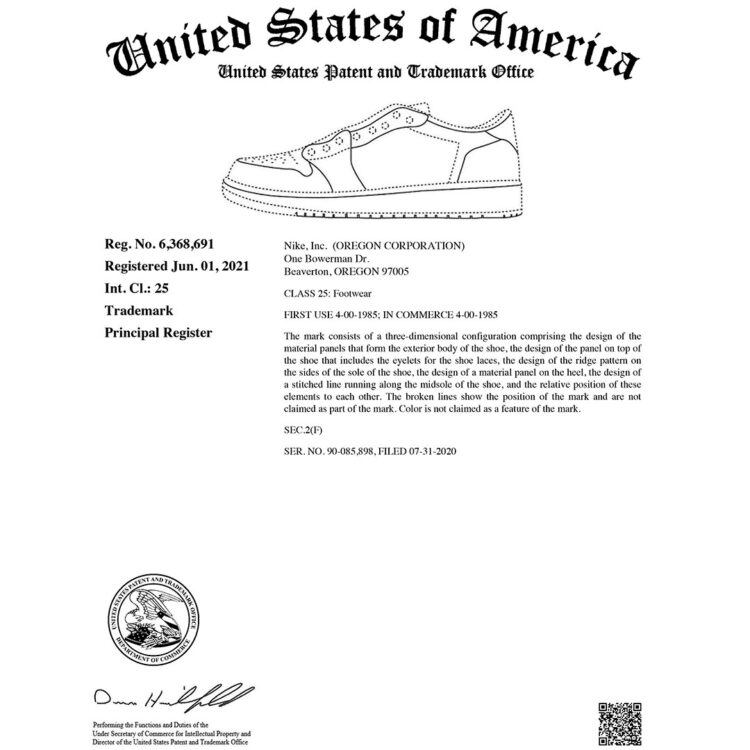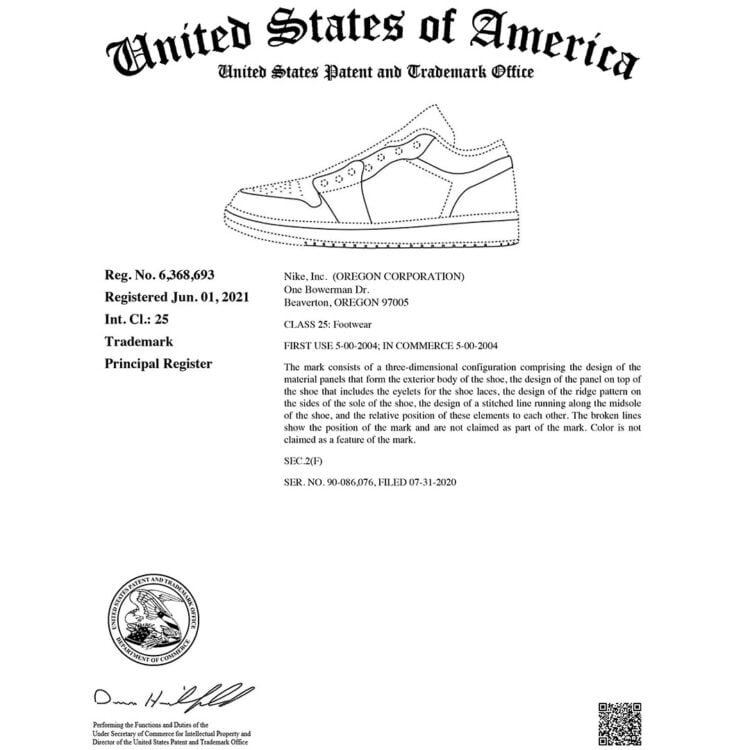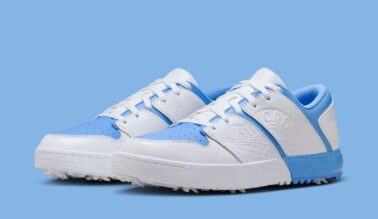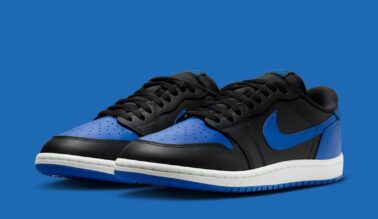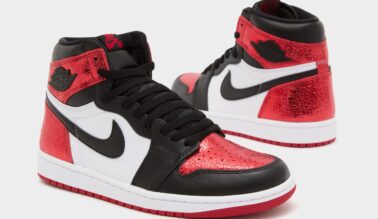This post may contain affiliate links. Please read our disclosure policy.
After more than 35 years after the shoes introduction, the United States Patent and Trademark Office (also known as the USPTO) has officially registered a protective trademark for the design of the Air Jordan 1.
The iconic silhouette first released in 1985 and saw a wave of look-a-likes right out of the gate. Large retail chains that include K-Mart and Target had products that were eerily similar to Nike’s big hit, the Nike Air Jordan. Nike recognized the sheer magnitude of the wave of bootlegs that they played both sides of the market and produced their own lower-priced knockoff – the AJ KO (Air Jordan Knock Off).
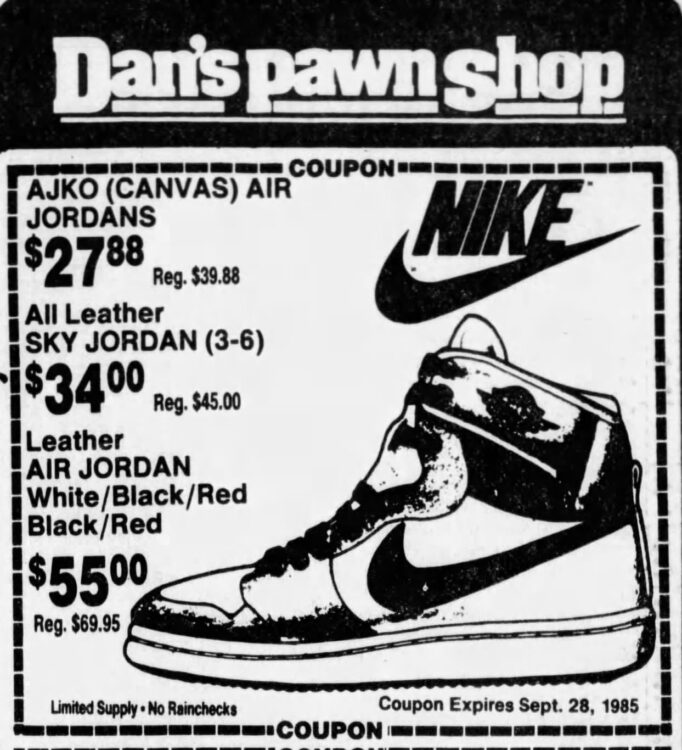
In recent years as the Air Jordan 1 has seen its greatest rise of popularity since the shoes initial debut more than three decades ago coupled with the fashion trend of knockoff and logo infringing wear, so too has there been a large wave of bootlegs, remakes, and remixes of the Air Jordan 1.
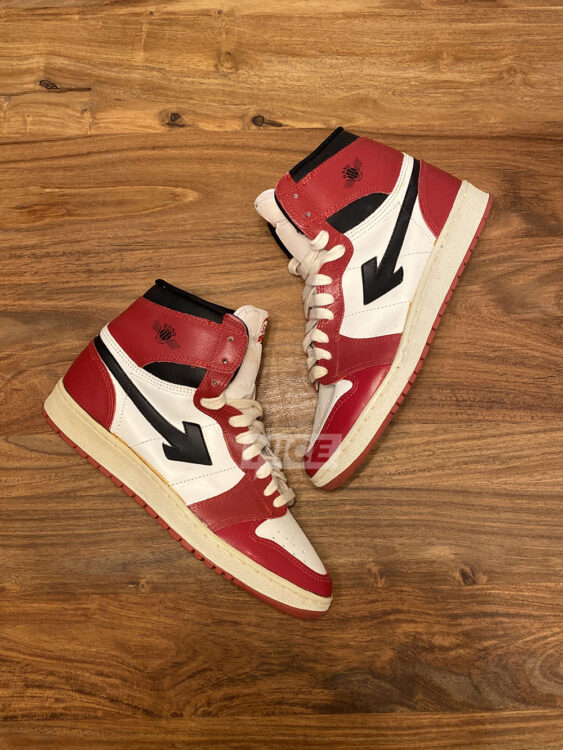
Sang Sports 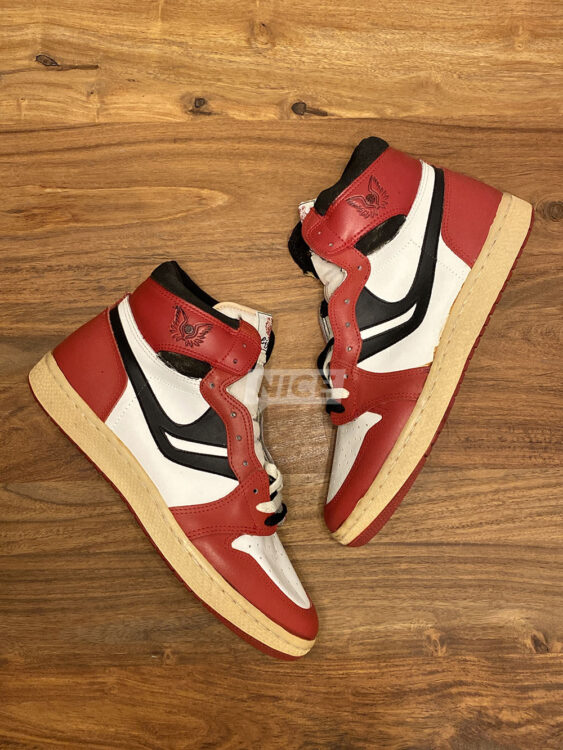
Liger 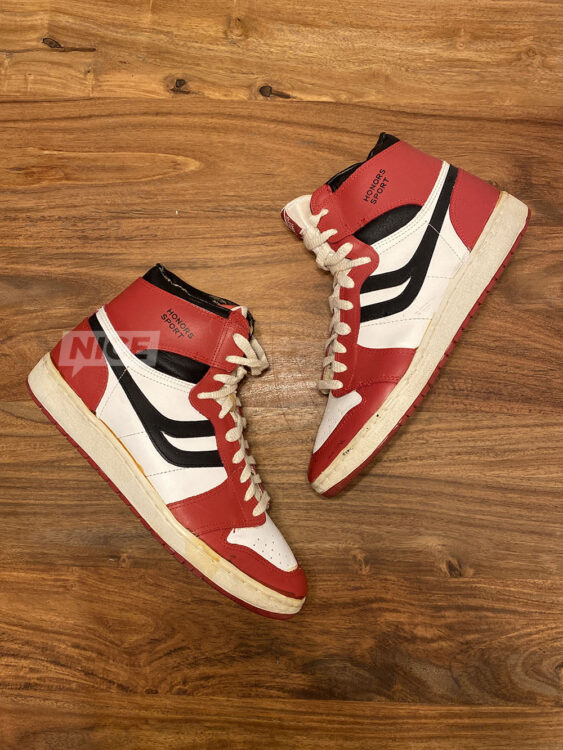
Honors Sport 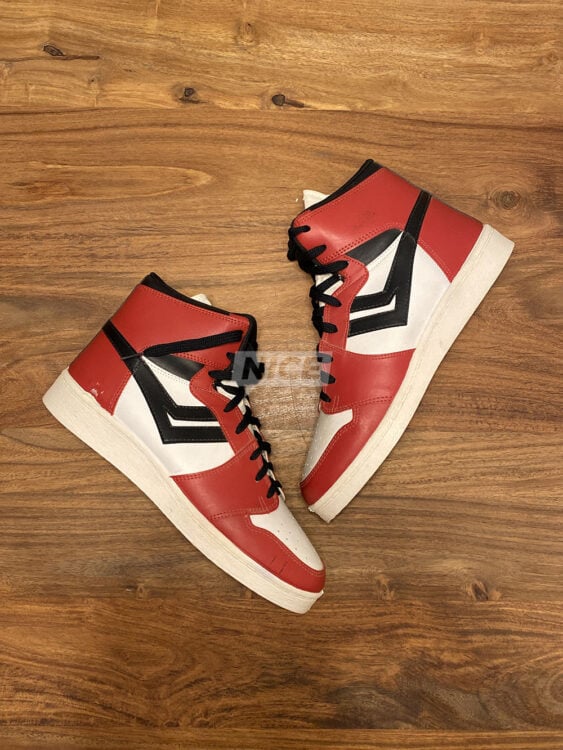
Unlabeled Made in USA
On July 31, 2020, Nike filed for a trademark for the Air Jordan 1 High, Low, and Low SE (retro low top shape introduced in 2004). The trademark was published for opposition in December of 2020 and on the final day in the 30 window that opposition to publication could be filed, attorneys for Vans requested a 90 day extension to oppose all three filings. Those 90 days lapsed without published opposition and on June 1, 2021 all three trademarks were granted and made official.
“Now that they have this registration, there are three huge ways this helps them,” says Zak Kurtz, a trademark attorney that specializes in the sneakers and sportswear space. “First, now that Nike has the registered trademark, they have the ability to go to US Customs so that Customs and Border Protection can assist in the seizure of goods that infringe at the ports of entry. Next, with a registered trademark at the federal level, the federal courts now have jurisdiction over disputes which makes the process much more expensive and tougher to defend for those infringing than local or state courts. Lastly and most importantly, under federal law Nike is entitled to three-times damages if the court determines that a party willfully infringed on their mark.”
With many of the bootleg goods being marketed and sold through digital platforms, the trademark will also give Nike the ability to use programs that marketplaces such as ebay, Amazon, and Alibaba have that give trademark holders the ability to dispute the listings of goods on the respective platforms. In the past many sellers have skirted around the issue by blurring or photo editing a trademark from the shoe, but now that Nike has a trademark on the shoe itself, a simple edit to the shape of the swoosh won’t be enough for the products to remain as an item available for purchase.
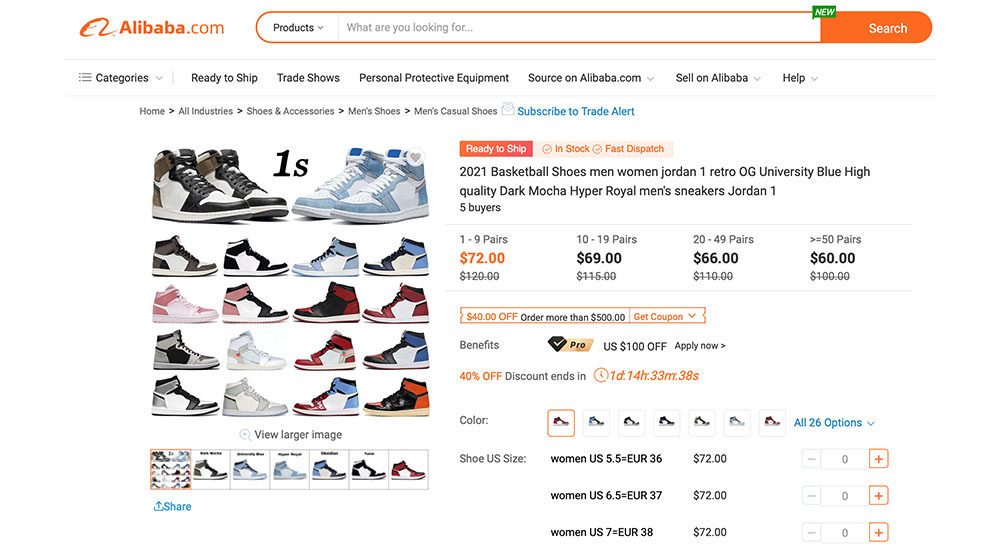
So far, it is not known if Nike has sent any cease and desist letters to any parties, but with the registered trademark in hand, one can bet that it will only be a matter of time before Nike starts sending notices to offending parties.


